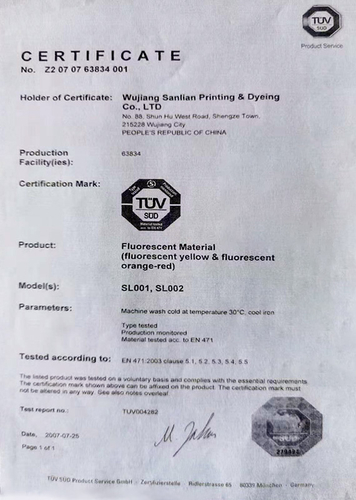Comprehensive Care Instructions and Maintenance Guidelines for Your Cooling Vest for Outdoor Work
1. Activation and Soaking Procedures
Proper Activation: Before each use, immerse the Cooling Vest for Outdoor Work in cool or lukewarm water for 5–10 minutes. This process activates the cooling polymers embedded within the fabric, ensuring maximum efficiency. Avoid using hot water, as it may compromise the integrity of the materials.
Gentle Water Removal: After soaking, gently press out excess water without twisting or wringing the vest. Twisting can distort the fabric and damage the internal cooling components.
2. Cleaning Recommendations
Hand Washing Only: To maintain the quality of your Cooling Vest for Outdoor Work , hand wash it with a mild detergent in cool water. Harsh chemicals, bleach, or fabric softeners should be strictly avoided, as they can degrade the cooling polymers and water-repellent nylon lining.
Thorough Rinsing: Ensure all soap residue is completely removed during rinsing to prevent any buildup that could interfere with the vest's cooling capabilities.
Air Drying: Allow the vest to air dry in a shaded area, away from direct sunlight or heat sources. Exposing the vest to high temperatures, such as those from tumble dryers or direct sunlight, can weaken the materials and reduce their effectiveness.
3. Storage Best Practices
Optimal Storage Conditions: When not in use, store the Cooling Vest for Outdoor Work in a clean, dry, and cool environment. Protect it from moisture, humidity, and extreme temperatures to preserve its cooling properties.
Avoid Compression: Do not fold or compress the vest tightly, as this can damage the internal structure and impair its ability to retain water and provide effective cooling.
4. Frequency of Use and Re-soaking
Regular Re-soaking: For extended periods of use, re-soak the vest every 5–10 hours to reactivate the cooling effect. The exact frequency may vary depending on environmental factors such as temperature, humidity, and airflow.
Prompt Rehydration: If the vest dries out completely during use, promptly re-soak it to restore its cooling functionality and ensure continued comfort.
5. Regular Inspection and Maintenance
Routine Checks: Periodically inspect the Cooling Vest for Outdoor Work for signs of wear and tear, such as tears, fraying, or damage to the liner. Address any issues immediately to prevent further deterioration and extend the vest's lifespan.
Timely Replacement: Over time, the cooling polymers may naturally lose some efficiency. If you notice a significant decline in performance, consider replacing the vest to maintain consistent cooling relief.

 English
English 简体中文
简体中文













 3rd Floor, East Gate, No. 2599 Park Road, Sheng Ze Town, Wu Jiang District, Suzhou City, Jiangsu Province
3rd Floor, East Gate, No. 2599 Park Road, Sheng Ze Town, Wu Jiang District, Suzhou City, Jiangsu Province  +86- 0512-63519080
+86- 0512-63519080
 +86-13584404311
+86-13584404311 